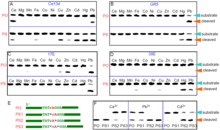Background
Cadmium, mercury, and lead are heavy metal environmental contaminants that are bio-accumulative and can impose serious organ damage, leading to cancer and even death. For this reason, they have collectively been subject to numerous international regulations strictly restricting their use. Given their highly toxic characteristics, it is important to screen for the presence of these heavy metals in drinking water and at source in wastewater applications. The current standard method for detection used very expensive inductive-coupled plasmon-mass spectrometry (ICP-MS) instrumentation that requires highly skilled operators and controlled laboratory operating environments. Such highly controlled requirements represent a sample processing bottleneck leading to long testing turnaround time. More portable and cost effective analytical testing methods are required to better enforce regulations and to detect and prevent these contaminant’s adverse environmental and health effects sooner.
Description of the invention
Waterloo researchers have developed a novel metal sensing platform based on DNAzymes (also known as deoxyribozymes or catalytic DNA). They incorporated a phosphorothioate modification in DNA and performed extensive in vitro selections to generate the most optimal sequence for detecting heavy metals. By making a phosphorothioate (PS) modification (adding a Sulphur group) to a previously known RNA-cleaving DNAzyme (Ce13d), the substrate cleavage site shifts the activity from being dependent on lanthanide to thiophilic metals such as Cd2+, Hg2+ and Pb2+. Thus, the catalytic domain of the DNAzyme catalyzes heavy metal-dependent cleavage of the substrate cleavage site. By incorporating this PS modification, a sensor array was prepared to detect each one of the metals with high sensitivity (limit of detection = 0.1 nM Pb2+, 4.8 nM Cd2+ and 2.0 nM Hg2+.
Advantages
This bio-sensor detection technology provides a means of heavy metal detection that is straight-forward, cost-effective, and provides detection which is both sensitive (below toxic levels) and selective. These sensors do not require expensive laboratory based instrumentation and highly skilled operators. This DNAzyme platform provides the best sequence reported so far for heavy metals specifically cadmium, and its sensitivity and selectivity are much better than most known technologies to date.
Potential applications
Bio sensors for detecting heavy metals such as: lead, mercury, and cadmium down to the EPA limit for these metals in drinking water. Also, detection of traces of heavy metal in food packaging samples such as rice bags and other food products. This technology is also useful model system for studying DNAzyme bioinorganic chemistry from the analytical chemistry standpoint, and detecting heavy metals below their toxic levels in water and other food samples.

(A-D) Gel images of the four DNAzymes with different metal ions and PO or PS (PS2 in (E)) substrate. (E) Schemes of the substrate with different sites of the PS modification (denoted by the blue stars). (F) Gel image of the four substrates with the Ce13d DNAzyme in the presence of different metal ions. For all the gels
Reference
8810-7386 & 8810-7396
Inventor(s)
Dr. Juewen Liu
Po-Jung Huang
Patent status
U.S. patent pending
Stage of development
Prototype stage, with ongoing R&D for proven application
Contact
Scott Inwood
Director of Commercialization
Waterloo Commercialization Office
519-888-4567, ext. 43728
sinwood@uwaterloo.ca
uwaterloo.ca/research